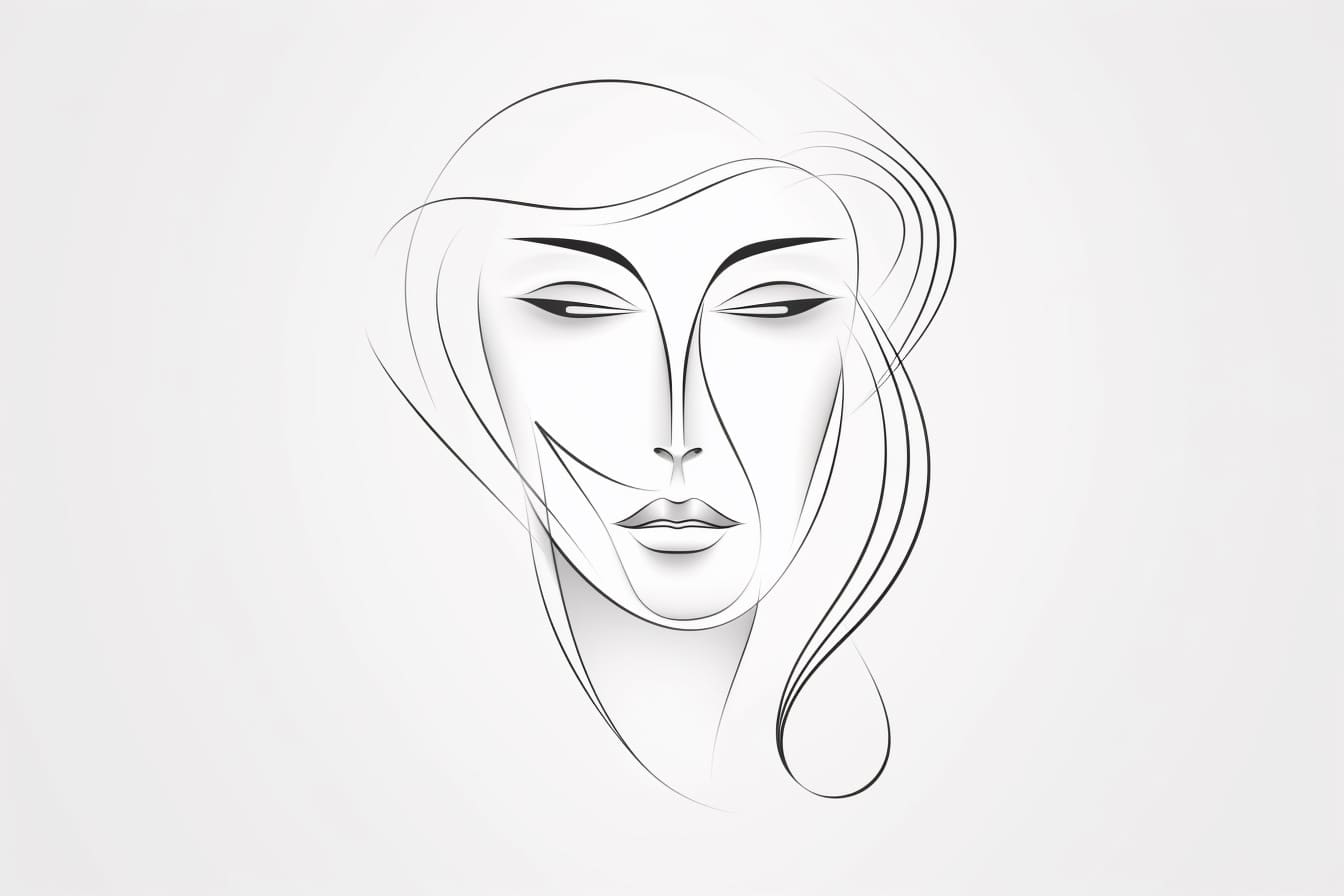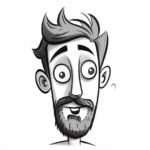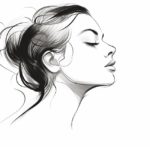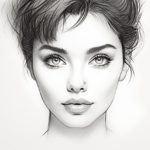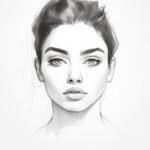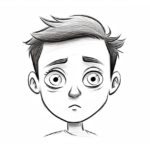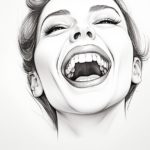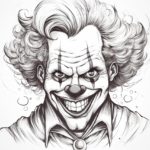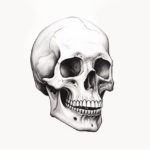Welcome to the fascinating world of drawing Abstract Faces! Abstract art is all about expressing emotions, ideas, and concepts in a unique and creative way. When it comes to drawing Abstract Faces, you have the freedom to experiment with shapes, lines, and colors to create a truly one-of-a-kind piece of art.
In this artistic journey, you will explore how to break away from traditional portrait techniques and instead focus on capturing the essence and personality of a face through abstraction. By simplifying and exaggerating features, playing with proportions, and using bold and unexpected color combinations, you can create dynamic and expressive Abstract Faces that convey a wide range of emotions and narratives.
Whether you are a seasoned artist looking to expand your creative horizons or a beginner eager to explore the endless possibilities of abstract art, drawing Abstract Faces offers a captivating and liberating experience. So grab your sketchbook, unleash your imagination, and let’s dive into the exciting world of abstract face drawing!
Materials Required
To draw an abstract face, you will need the following materials:
- Drawing paper or sketchbook
- Pencils (graphite pencils or colored pencils)
- Eraser (preferably a kneaded eraser for easy corrections)
- Fine tip markers or pens (optional for outlining and details)
- Blending tools such as blending stumps or tortillons (for shading and blending)
- Reference images of abstract faces for inspiration and ideas
- Any additional materials you may want to use for mixed media effects, such as watercolors, pastels, or markers.
How to Draw an Abstract Face: a Step-by-step Guide
Step 1: Gather Your Materials
Before you start drawing, make sure you have all the necessary materials: paper, pencils, eraser, and any other supplies you prefer working with.
Step 2: Outline the Basic Shape
- Start by lightly sketching an oval shape for the head.
- Add a vertical line down the center of the oval to help with symmetry.
Step 3: Divide the Face
- Divide the face horizontally into thirds.
- The top third will be the hairline, the middle third will be the eyes, and the bottom third will be the nose and mouth area.
Step 4: Add Features
- Sketch the eyes within the middle third of the face. Abstract faces can have exaggerated or unconventional eye shapes.
- Place the nose below the eyes, keeping it simple and abstract.
- Add the mouth below the nose, experimenting with different shapes and styles.
Step 5: Enhance the Features
- Refine the eyes by adding details like eyelashes, pupils, and eyebrows.
- Experiment with different patterns or textures for the hair.
- Add abstract elements around the face to make it more unique and interesting.
Step 6: Add Shading and Texture
- Use shading to create depth and dimension in your drawing.
- Experiment with different techniques like cross-hatching or stippling to add texture to the features and background.
Step 7: Final Touches
- Review your drawing and make any necessary adjustments.
- Erase any unnecessary guidelines and clean up the lines to make your abstract face stand out.
Step 8: Experiment and Have Fun
- Don’t be afraid to experiment with different styles and techniques.
- Use your creativity to make your abstract face truly unique and expressive.
Step 9: Practice and Refine
- Keep practicing drawing abstract faces to improve your skills.
- Don’t be afraid to make mistakes – they can lead to new discoveries and artistic growth.
By following these steps and practicing regularly, you can create beautiful and compelling abstract faces in your artwork.
Conclusion
In conclusion, drawing an abstract face offers a unique and creative way to explore the complexities of human expression and emotion through art. By following the steps outlined in this article and allowing yourself to embrace experimentation and individuality, you can create stunning and thought-provoking abstract faces that reflect your own artistic vision. Remember to trust your instincts, have fun with the process, and continue to push the boundaries of your creativity as you delve deeper into the world of abstract art.
Fun Facts About Abstract Faces
- Abstract Faces can evoke a wide range of emotions and interpretations from viewers, as they often lack specific facial features but still convey expressions and moods.
- Artists use Abstract Faces to explore themes of identity, emotions, and human connections in a unique and visually compelling way.
- Abstract Faces can be found in various art forms, including paintings, sculptures, digital art, and street art, showcasing the versatility and adaptability of this artistic concept.
- The use of Abstract Faces allows artists to experiment with shapes, colors, and textures, pushing the boundaries of traditional portraiture and challenging viewers to see beyond realistic representations.
- Abstract Faces have been a prominent feature in art movements such as Cubism, Surrealism, and Abstract Expressionism, showcasing the enduring appeal and relevance of this artistic motif.
- Some artists use Abstract Faces as a form of self-expression or introspection, creating deeply personal and introspective artworks that reflect their inner thoughts and feelings.
- Abstract Faces can be open to individual interpretation, inviting viewers to project their own emotions and experiences onto the artwork, creating a unique and personal connection with the piece.
- The use of Abstract Faces in art allows for a sense of universality and timelessness, as the absence of specific features can make the artwork feel relatable and relevant across different cultures and time periods.
- Abstract Faces can challenge traditional notions of beauty and perfection, embracing imperfections and unconventional aesthetics to create visually striking and thought-provoking artworks.
- The dynamic and fluid nature of Abstract Faces allows for endless creativity and innovation, with artists constantly finding new ways to reinvent and reinterpret this timeless artistic motif.
Suggestions for Scenes and Settings for Abstract Face Drawings
Certainly! Here are some suggestions for scenes and settings to inspire your drawings of Abstract Faces:
- Galactic Abstract Face: Create a face inspired by the stars, planets, and cosmic elements. Add swirls of nebulae, glittering stars, and cosmic dust to create a celestial feel.
- Underwater Abstract Face: Imagine a face submerged in the depths of the ocean. Include flowing seaweed, colorful coral, and shimmering schools of fish to add an aquatic touch.
- Urban Abstract Face: Picture a face amidst a bustling cityscape. Incorporate skyscrapers, streetlights, graffiti art, and bustling crowds to capture the energy of urban life.
- Enchanted Forest Abstract Face: Envision a face intertwined with lush foliage, magical creatures, and glowing fireflies. Include whimsical elements like fairies, unicorns, and enchanted trees to bring the scene to life.
- Desert Abstract Face: Create a face set against a backdrop of vast desert landscapes. Include swirling sand dunes, cacti, and a blazing sun to evoke the harsh beauty of the desert.
- Abstract Face in a Storm: Depict a face amidst a dramatic thunderstorm. Add lightning bolts, dark clouds, and swirling winds to create a sense of intensity and movement.
- Retro Abstract Face: Draw a face inspired by retro aesthetics from the 1960s or 70s. Include bold colors, geometric shapes, and psychedelic patterns to capture the spirit of the era.
- Abstract Face in Space: Imagine a face floating in the vastness of outer space. Add swirling galaxies, shooting stars, and cosmic debris to create a dreamy and surreal atmosphere.
- Abstract Face in a Dream: Create a face that reflects the surreal and fantastical nature of dreams. Incorporate whimsical elements, surreal landscapes, and unexpected twists to evoke the feeling of a dream world.
- Abstract Face in a Time Warp: Combine elements from different time periods to create a face that transcends time. Blend vintage, futuristic, and ancient elements to create a unique and intriguing composition.
Remember to let your imagination run wild and experiment with different styles, colors, and textures to bring your Abstract Faces to life in these diverse scenes and settings. Have fun exploring and creating!

